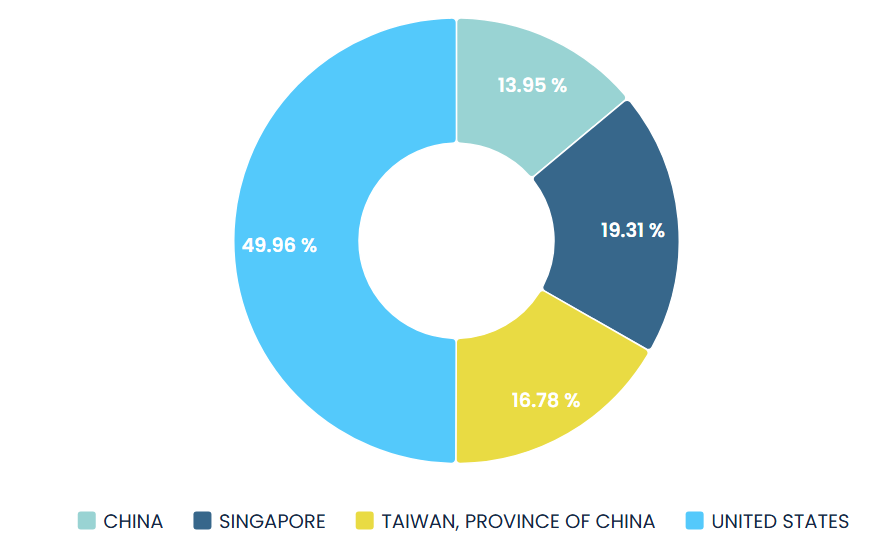Tyson Foods to close major Nebraska beef plant amid cattle shortage - WSJ
After nullifying one-year gains following President Trump’s Liberation Day in early April, Nvidia (NASDAQ:NVDA) stock started to rebound after Trump demonstrated weak will on tariffs. However, this was short lived as NVDA shares dropped 6% on Tuesday following another U.S. policy shift.
Namely, Nvidia informed the public via Form 8-K filing that the U.S. government requested another export control restriction, which covers both Nvidia’s H20 and AMD’s MI308 chips for AI workloads in data centers. As with previous restrictions under the Biden admin, the goal is to slow down China’s AI capabilities.
The export licensing not only includes China but D:5 nations as well. With the new licensing regime having taken effect on April 14th until indefinitely, Nvidia now projects a $5.5 billion revenue loss related to H20s “inventory, purchase commitments, and related reserves”.
Presently priced at $103.18 per share, NVDA stock is now significantly below the 52-week average of $122. This makes for barely 20% yearly gains, down over 24% year-to-date. The question is, are there other factors present that could offset Nvidia’s revenue loss and still make it a worthwhile buy-the-dip opportunity at this point in time?
Nvidia’s China Revenue and Previous Response to Chip Restrictions
At the end of February, for fiscal Q4 2025, Nvidia reported record quarterly revenue of $39.3 billion. This represents a 78% year-over-year growth. For the entire year 2024 (fiscal 2025), Nvidia’s revenue climbed to $130.5 billion, a yearly uptick of 147%.
Of that revenue, Nvidia generated half from the U.S., while China represents 14% at $17.11 billion.

Of course, it is highly likely that Singapore plays a major role in China receiving restricted AI chips as a transshipment point. And because these geopolitical tensions appear to be a permanent fixture of the global economy, Nvidia had previously resorted to nerfing AI chips.
Specifically, by modifying its leading H100 series during the initial AI investment wave into H800. This way, Nvidia went under the government threshold for AI chip exports. H800s were then widely used by Chinese tech giants Tencent (HK:0700), Baidu (NASDAQ:BIDU) and Alibaba (NYSE:BABA). Interestingly, this only served to propel optimizations for the Chinese DeepSeek AI model.
In turn, DeepSeek lowered compute expectations which translated into suppression of AI stocks in late January.
Nvidia’s Blackwell Push
Since GTC 2024 keynote speech in March, Nvidia CEO Jensen Huang has been making it clear that much of Nvidia’s future revenue relies on the cutting-edge Blackwell chips, as successors to the Hopper architecture (H series).
“The demand for Blackwell is insane. Everyone wants to have the most, and everyone wants to be first.”
Nvidia CEO Jensen Huang
Even after some production concerns in the second half of 2024, Nvidia’s chief financial officer Colette Kress waved them off, insisting that “Blackwell demand is staggering”. Continuing from the first wave of AI investments, Nvidia’s revenue is concentrated within Big Tech hyperscalers such as Microsoft (NASDAQ:MSFT), Alphabet (NASDAQ:GOOGL), Amazon (NASDAQ:AMZN) and Meta Platforms (NASDAQ:META).
But as we have maintained all along, the big push for AI compute power is yet to come via video generation. The Studio Ghibli mania in March already showcased the demand from image generation. At that time, Sam Altman, at the head of OpenAI’s ChatGPT, noted that “GPUs are melting”, having introduced rate limits as a response.
This tells us that greatly more compute-demanding video generation will be even more limited. In turn, we are likely to see cost-efficiency price wars between different companies. And having secured +80% AI chip dominance, Nvidia will be at the center of that.
It is then no wonder that Nvidia announced on Monday a 4-year plan to build $500 billion worth of AI servers in the U.S. Taiwan’s TSMC will aid the efforts as the world’s top semiconductor manufacturer, churning out chips from the foundry in Phoenix, Arizona.
Alongside TSMC, Taiwanese companies Foxconn (SS:601138), Wistron, SPIL and Amkor (NASDAQ:AMKR) (Arizona-based) will also contribute for this massive AI infrastructure effort.
“The engines of the world’s AI infrastructure are being built in the United States for the first time,”
Nvidia CEO Jensen Huang
Is it then likely that Nvidia’s AI dominance will subside, alongside AI workload demand? To answer that is to answer whether investors should see the present NVDA stock price as a rare opportunity.
***
Neither the author, Tim Fries, nor this website, The Tokenist, provide financial advice. Please consult our website policy prior to making financial decisions.
This article was originally published on The Tokenist. Check out The Tokenist’s free newsletter, Five Minute Finance, for weekly analysis of the biggest trends in finance and technology.
